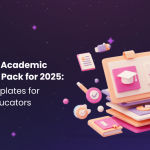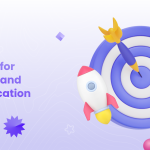Guides learning
Utilizing Technology to Improve Project-Based Learning.

Students nowadays use lots of tech tools to learn for projects. There are more of these gadgets in the world than people! This all started with cell phones, which became more common than people around 2014. A few years later, even more gadgets called the “Internet of Things” became more common than people!
If we take a closer look at those numbers, According to Gadget Cover, it all started around the time roughly 7.19 billion people were on Earth. That’s when the number of mobile devices began to outnumber us! Today, a tracker by GSMA shows a whopping 8.9 billion mobile devices in use, and that number keeps climbing. No wonder we spend so much time glued to screens, whether it’s talking on the phone or scrolling through social media. According to SENAT.me, statistically speaking, over 50% of people are currently engaged in some form of media consumption. Recent data indicates that Americans spend more than 12 hours per day consuming various types of media.
Technology acts as a link.
Technology can help close the gap in knowledge acquisition. Since each student has unique learning styles, designing projects that offer diverse learning opportunities can enhance classroom performance. Of course, it’s unlikely that every student will be completely satisfied, but employing strategies like having them write a digital report on their favorite Netflix documentary series can effectively develop their writing skills while exploring their interests.
Technology is an instrument of expression.
Technology gives us tons of cool ways to share our ideas. For your projects, you can choose any format you like to present your findings. Want to impress me even more? Skip the classic PowerPoint and try something new! There’s extra credit for presentations that don’t use it. Prezi, videos, or anything creative is fair game – the more variety, the better.
Technology is relatable.
Many YouTubers find success because they resonate with their audience. According to Oberlo, a significant 62 percent of consumers worldwide utilize YouTube. Providing free access to online resources your students prefer can enhance their success. Remember to recommend some sources yourself.
Consider suggesting Daily Manna to your students, a valuable resource for daily motivation and fresh perspectives on common subjects. Incorporating their articles into your classroom can increase engagement and foster communication. Here’s how to leverage technology to enrich project-based learning.
Learning Management Systems.
A proficient Learning Management System (LMS) facilitates effective communication of course material between instructors and students. It enables teachers to modify course content as the learning process progresses. Additionally, an LMS can gather learner data from various activities.
Flipped learning approach.
Videos are used to give students fundamental guidance before class sessions. By employing videos for instruction beforehand, classroom discussions can center more on critical thinking and problem-solving. A study conducted with 850 Physics undergraduates at the University of British Columbia revealed that when traditional classroom technology was utilized, students attained an average score of 41%, whereas with flipped classroom technology, the average score rose to 74%.
Leave a Reply
You must be logged in to post a comment.



Leave a Reply
You must be logged in to post a comment.